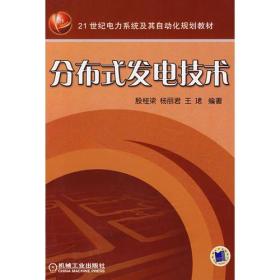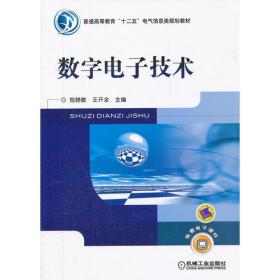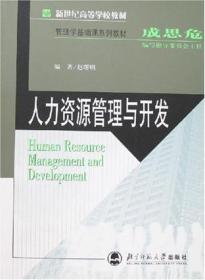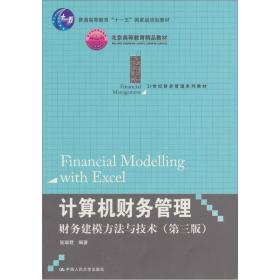
会计专业英语(附听力音频)
正版二手,均有笔记不影响使用,无赠品、光盘、MP3等。如需购买套装书,请联系客服核实,批量上传数据有误差,默认一本,套装书售后运费自理,还请见谅!
¥ 5.8 1.4折 ¥ 42 八五品
仅1件
山东枣庄
认证卖家担保交易快速发货售后保障
作者耿云江
出版社人民邮电出版社
出版时间2018-09
版次1
装帧平装
货号9787115472472
上书时间2024-10-27
- 最新上架
商品详情
- 品相描述:八五品
图书标准信息
- 作者 耿云江
- 出版社 人民邮电出版社
- 出版时间 2018-09
- 版次 1
- ISBN 9787115472472
- 定价 42.00元
- 装帧 平装
- 开本 16开
- 纸张 胶版纸
- 页数 220页
- 字数 358千字
- 【内容简介】
-
内 容 提 要
本书以提高英语的应用能力为导向,对财务会计的基本知识做了详细介绍,同时涉及成本会计、管理会计、审计等内容。全书共10章,主要内容包括会计概述、会计循环、财务报表、流动资产、非流动资产、负债、所有者权益、收入、费用、成本会计等。同时,每章还配有学习目标、听力音频、知识拓展、关键术语、复习讨论题、练习题、参考译文等。
本书不仅可以作为高等院校会计学、财务管理、审计等专业的教材,也可以作为财务会计人员、管理人员的自学用书。 - 【作者简介】
- 耿云江 2002年4月至今任教东北财经大学会计学院,主要讲授管理会计、Financial Statement Analysis,会计英语等。参编高级财务管理、管理会计、公司理财等教材多部。
- 【目录】
-
Chapter 1 Overview of Accounting 1
Listening Online 1
Learning Objectives 1
1.1 Accounting and Accounting Profession 1
1.1.1 Ethics 2
1.1.2 Accounting Function 2
1.1.3 Accounting Information Users 3
1.1.4 Accounting Profession 3
1.2 Accounting Assumptions 4
1.2.1 Business Entity 4
1.2.2 Going-concern 5
1.2.3 Monetary Unit 6
1.2.4 Time Period 7
1.3 Accounting Principles 8
1.3.1 Accrual Basis 8
1.3.2 Historical Cost 9
1.3.3 Realization 10
1.3.4 Matching 11
1.3.5 Full Disclosure 11
1.4 Quality Characteristics of Accounting Information 11
1.4.1 Relevance 13
1.4.2 Reliability 13
1.4.3 Comparability 14
1.4.4 Materiality 14
Key Terminologies 15
Review and Discussion Questions 17
Exercises 17
参考译文 18
Chapter 2 Accounting Cycle 26
Listening Online 26
Learning Objectives 26
2.1 Accounting Equation and
Double-entry System 26
2.1.1 Accounting Equation 26
2.1.2 Double-entry System 27
2.2 Accounting Cycle 27
2.3 Journals 28
2.4 Ledgers 29
2.5 Adjusting 30
2.5.1 Prepaid Expenses 30
2.5.2 Accrued Expenses 31
2.5.3 Accrued Revenues 32
2.5.4 Unearned Revenues 32
2.6 Closing Process 33
2.6.1 Temporary and Permanent Accounts 33
2.6.2 Posting Closing Entries 33
2.7 Trial Balance 34
2.7.1 Steps in Preparing a Trial Balance 34
2.7.2 Searching For and Correcting Errors 35
Key Terminologies 36
Review and Discussion Questions 37
Exercises 37
参考译文 38
Chapter 3 Financial Statements 45
Listening Online 45
Learning Objectives 45
3.1 Balance Sheet 45
3.1.1 Components of Balance Sheet 45
3.1.2 Form of Balance Sheet 47
3.2 Income Statement 50
3.2.1 Components of Income Statement 50
3.2.2 Form of Income Statement 52
3.3 Cash Flow Statement 54
3.3.1 Components of Cash Flow Statement 54
3.3.2 Preparation of Cash Flow Statement 55
3.4 Statement of Changes in Equity 58
3.4.1 Components of Statement of Changes in Equity 59
3.4.2 Preparation of Statement of Changes in Equity 59
3.5 Notes to Financial Statements 61
3.5.1 Accounting Policy 61
3.5.2 Financial Instruments 61
3.5.3 Related Party Transactions 62
3.5.4 Contingencies 62
3.5.5 Subsequent Events 62
Key Terminologies 65
Review and Discussion Questions 66
Exercises 67
参考译文 68
Chapter 4 Current Assets 81
Listening Online 81
Learning Objectives 81
4.1 Monetary Capital 81
4.1.1 Cash 81
4.1.2 Management of Cash-bank Reconciliation 82
4.1.3 Internal Control Over Cash 83
4.1.4 Petty Cash Fund 84
4.1.5 Cash Over and Short 84
4.2 Receivables 85
4.2.1 Classification of Receivables 85
4.2.2 Bad Debts 85
4.2.3 Estimation of Bad Debts 87
4.3 Inventories 88
4.3.1 Inventory System 88
4.3.2 Cost of Inventory Acquired 89
4.3.3 Ending Inventory Valuation 89
Key Terminologies 91
Review and Discussion Questions 92
Exercises 92
参考译文 93
Chapter 5 Non-current
Assets 100
Listening Online 100
Learning Objectives 100
5.1 Fixed Assets 100
5.1.1 Definition and Characteristics of Fixed Assets 100
5.1.2 Classification of Fixed Assets 101
5.1.3 Costs of Fixed Assets 101
5.1.4 Post-acquisition Expenditures 102
5.1.5 Depreciation and Impairment 103
5.1.6 Disposals of Fixed Assets 104
5.2 Intangible Assets 105
5.2.1 Definition and Characteristics of Intangible Assets 105
5.2.2 Main Categories of Intangible Assets 105
5.2.3 Recognition and Measurement of Intangible Assets 106
5.2.4 Post-acquisition Measurement 107
5.2.5 Disposals of Intangible Assets 108
5.3 Investments 108
5.3.1 Objectives of Investment 108
5.3.2 Types of Securities 109
Key Terminologies 110
Review and Discussion Questions 111
Exercises 111
参考译文 113
Chapter 6 Liabilities and Owner’s
Equity 119
Listening Online 119
Learning Objectives 119
6.1 Current Liabilities 119
6.1.1 Definition of Current Liabilities 119
6.1.2 Accounts Payable 120
6.1.3 Short-term Notes Payable 120
6.1.4 Unearned Revenue 120
6.1.5 Short-term Borrowings 120
6.1.6 Accrued Liabilities 121
6.1.7 Dividend Payable 121
6.1.8 Current Portion of Long-term Obligation 121
6.2 Non-current Liabilities 122
6.2.1 Long-term Borrowings 123
6.2.2 Bonds Payable 123
6.2.3 Long-term Notes Payable 124
6.2.4 Pension Plans 124
6.3 Types of Organization 125
6.3.1 Sole Proprietorship 125
6.3.2 Partnership 125
6.3.3 Corporation 126
6.4 Owner’s Equity 127
6.4.1 Rights of Stockholders 127
6.4.2 Retained Earnings 128
6.4.3 Dividend 128
Key Terminologies 129
Review and Discussion Questions 130
Exercises 130
参考译文 131
Chapter 7 Revenue and
Expense 138
Listening Online 138
Learning Objectives 138
7.1 Revenue 138
7.1.1 Definition of Revenue 138
7.1.2 The Earning Process of Revenue 139
7.1.3 Recognition of Revenue 139
7.2 Expense 141
7.2.1 Definition of Expense 141
7.2.2 Cost Vs Expense 142
7.2.3 Recognition of Expense 142
7.2.4 Specific Expense Items 142
Key Terminologies 144
Review and Discussion Questions 144
Exercises 144
参考译文 146
Chapter 8 Cost Accounting 150
Listening Online 150
Learning Objectives 150
8.1 Overview of Cost Accounting 150
8.1.1 Definition of Cost
Accounting 150
8.1.2 Features of Cost Accounting 150
8.1.3 Financial Accounting, Management Accounting and
Cost Accounting 151
8.1.4 Cost Classifications 152
8.2 Costing Method 155
8.2.1 Job-order Costing 155
8.2.2 Process Costing 156
8.2.3 Activity Based Costing 158
Key Terminologies 160
Review and Discussion Questions 161
Exercises 161
参考译文 162
Chapter 9 Management Accounting 168
Listening Online 168
Learning Objectives 168
9.1 Introduction to Management Accounting 168
9.1.1 Definition of Management Accounting 168
9.1.2 Comparison of Financial and Management Accounting 168
9.1.3 Functions of Management Accounting 170
9.2 Cost Behavior 171
9.2.1 Variable Cost 171
9.2.2 Fixed Cost 172
9.2.3 Mixed Cost 172
9.3 Cost-Volume-Profit Analysis 173
9.3.1 Basic Concept of Cost-Volume-Profit Analysis 173
9.3.2 Break-even Analysis 174
9.3.3 Target Profit Analysis 175
9.4 Budget and Performance
Evaluation 176
9.4.1 Budget 176
9.4.2 Performance Evaluation 177
Key Terminologies 179
Review and Discussion Questions 180
Exercises 180
参考译文 181
Chapter 10 Audit 187
Listening Online 187
Learning Objectives 187
10.1 Introduction to Audit 187
10.1.1 Definition of Audit 187
10.1.2 Types of Audit 189
10.1.3 Types of Auditors 190
10.1.4 Componets of Audit Report 191
10.2 Audit Procedure 192
10.2.1 Management Assertions 192
10.2.2 Identify Audit Objectives 193
10.2.3 Carry Out Audit Specifically 194
10.3 Internal Control 198
10.3.1 Definition of Internal Control 198
10.3.2 Development History of Internal Control 199
10.3.3 Elements of Internal Control 199
Key Terminologies 202
Review and Discussion Questions 203
Exercises 203
参考译文 204
点击展开
点击收起
相关推荐
— 没有更多了 —




















以下为对购买帮助不大的评价